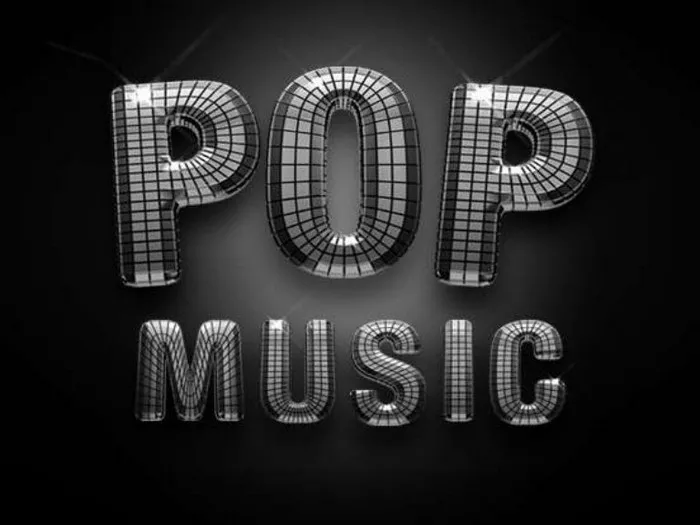Music has the remarkable ability to transcend boundaries and connect people from all walks of life. It reflects the pulse of society and serves as a cultural barometer of our times. In the ever-evolving world of music, it is intriguing to unravel the current trends, popular genres, and the artists who dominate the charts. This article delves into the most popular music today, discussing the prevailing genres, influential artists, and the methods used to measure music popularity in the modern industry.
I. The Reigning Genres:
a. Pop Music’s Unwavering Dominance:
Pop music continues to reign as one of the most popular genres in the current music landscape. Its catchy melodies, relatable lyrics, and broad appeal make it a favorite among listeners worldwide. Pop music’s versatility allows it to incorporate elements from various genres, including hip-hop, electronic, and R&B, ensuring its continued relevance and popularity.
b. The Soaring Influence of Hip-Hop:
Hip-hop has emerged as a formidable force in the music industry, captivating audiences with its rhythmic beats, poignant storytelling, and raw authenticity. Artists like Drake, Kendrick Lamar, and Cardi B have propelled hip-hop to new heights, with their impactful lyrics resonating deeply with listeners. The genre’s popularity is also evident in the dominance of hip-hop tracks on streaming platforms and the mainstream charts.
c. The Ever-Persistent Appeal of Rock:
While pop and hip-hop may currently hold the spotlight, rock music maintains a dedicated following. Rock’s enduring appeal can be attributed to its energetic instrumentation, introspective lyrics, and the ability to capture emotions in a raw and unfiltered manner. Artists like Foo Fighters, Imagine Dragons, and Twenty One Pilots continue to attract both loyal rock enthusiasts and newcomers to the genre.
II. The Titans of the Music Industry:
a. The Pop Powerhouses:
Pop icons such as Taylor Swift, Ariana Grande, and Ed Sheeran have firmly established themselves as the leading figures in the music industry. Their chart-topping albums, sold-out tours, and massive online followings exemplify their immense popularity and influence over the global music landscape. These artists consistently deliver infectious hits that resonate with millions of fans worldwide.
b. The Hip-Hop Phenomenons:
Hip-hop has birthed numerous superstars who have taken the music industry by storm. Artists like Drake, Kendrick Lamar, and Post Malone have achieved immense success, dominating the charts, accumulating record-breaking streaming numbers, and amassing dedicated fan bases. Their ability to seamlessly blend genres, captivating storytelling, and charismatic stage presence have propelled them to the forefront of the hip-hop scene.
c. The Rock Renegades:
While rock music may not dominate the charts like it once did, it still boasts its own set of influential artists. The likes of Foo Fighters, Imagine Dragons, and Twenty One Pilots have successfully merged rock sensibilities with contemporary elements, captivating a diverse fan base. Their electrifying performances and emotionally charged anthems ensure the continued popularity of rock music in today’s industry.
III. Unraveling Music Trends and Styles:
a. Blending Genres and Cross-Pollination:
The modern music landscape is characterized by a fusion of genres, with artists exploring new sonic territories by blending elements from different musical styles. This cross-pollination has given rise to genre-bending tracks that defy traditional categorization. Examples include the infusion of pop and country in songs by artists like Lil Nas X and the incorporation of electronic elements in mainstream pop music.
b. Rise of Latin Music:
Latin music has experienced a significant surge in popularity, transcending language barriers and captivating a global audience. Artists like Bad Bunny, J Balvin, and Rosalía have introduced a fresh wave of Latin sounds to the mainstream, incorporating reggaeton, trap, and salsa influences. The vibrant rhythms and infectious energy of Latin music have contributed to its widespread acclaim and commercial success.
c. Embracing Diversity and Inclusion:
The music industry is increasingly embracing diversity and inclusion, allowing artists from marginalized communities to shine. This shift has resulted in a more diverse range of voices and musical styles reaching mainstream audiences. Artists like Lizzo, Megan Thee Stallion, and H.E.R. have used their platforms to champion important social issues and challenge traditional norms, resonating with listeners who seek music that represents their experiences.
IV. Measuring Music Popularity:
a. Streaming Platforms and Digital Metrics:
In today’s digital age, music popularity is often measured through streaming platforms like Spotify, Apple Music, and YouTube. The number of streams, downloads, and views an artist or song accumulates provides valuable data on their reach and popularity. Streaming platforms’ algorithmic playlists and personalized recommendations also play a significant role in promoting and exposing music to a wider audience.
b. Chart Performances and Sales:
Traditional methods such as chart performances and physical album sales still hold relevance in measuring music popularity. Chart rankings, including the Billboard Hot 100, UK Singles Chart, and album charts, provide a snapshot of an artist or song’s commercial success and popularity within a specific timeframe. However, with the advent of streaming, chart methodologies have evolved to include digital metrics to reflect the changing consumption patterns.
c. Social Media Influence and Engagement:
Social media platforms have become indispensable tools for measuring music popularity and gauging an artist’s influence. The number of followers, likes, shares, and engagement across platforms like Instagram, Twitter, and TikTok serve as indicators of an artist’s reach and influence over their fan base. Additionally, social media provides a direct connection between artists and fans, fostering a sense of community and generating viral moments that can propel songs to new heights of popularity.
Conclusion:
The music landscape today is a rich tapestry of genres, artists, and styles that cater to diverse tastes and preferences. Pop music continues to dominate, while hip-hop and rock maintain their own dedicated followings. Artists from Taylor Swift to Drake, and Foo Fighters to Bad Bunny, shape the current musical landscape, captivating audiences with their creative prowess and resonant storytelling. With the influence of streaming platforms, social media, and evolving chart methodologies, the music industry continues to adapt, ensuring that the most popular music of today remains accessible and ever-evolving.

